
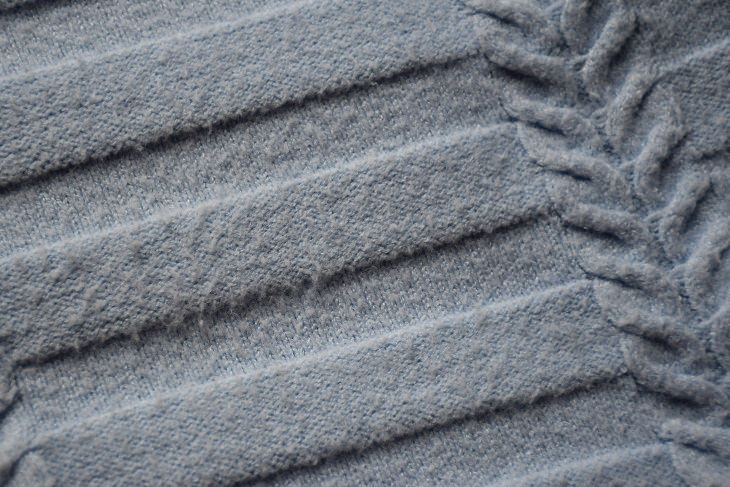

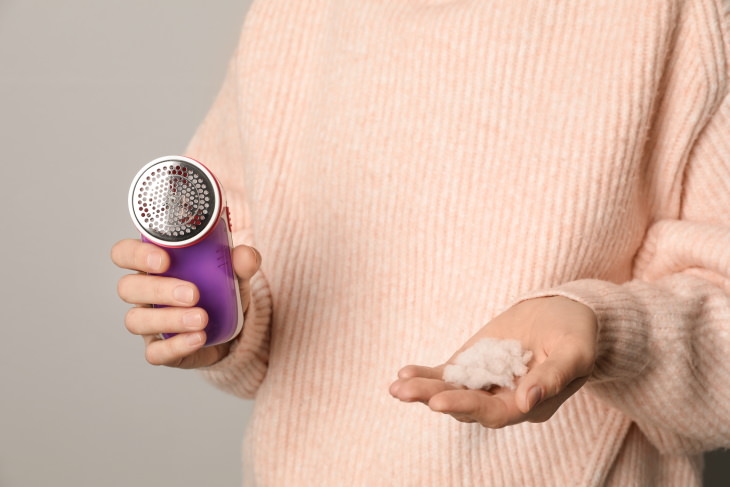
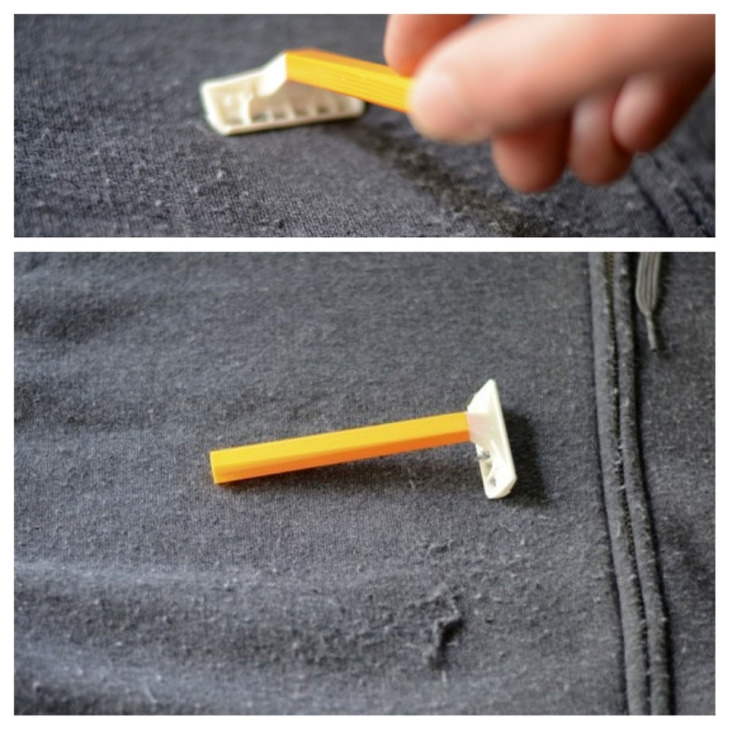
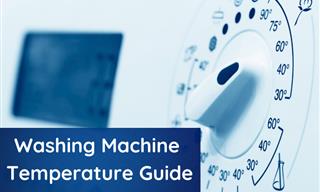
Washing Machine Temperature Guide: All You Need to Know
Hot, warm, or cold water – what’s the best washing machine setting for your laundry?
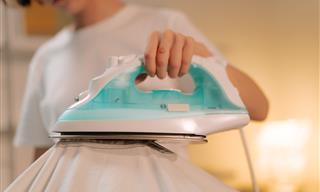
How to Use Your Iron to Get Crisp Shirts, Pants, and Sheets
Your ironing skills make a much bigger difference in the appearance of your clothes than you think!

Guide: How to Prevent and Get Rid of Carpet Beetles
How to prevent and get rid of carpet beetles in your home.
 3:00
3:00
Smart Cable Hacks You Didn’t Know You Needed
Here are some quick ways to organize every cord in your house.

DON'T Remove Deodorant Stains With Bleach, Here's Why
Avoid a laundry bleach disaster with this short guide.
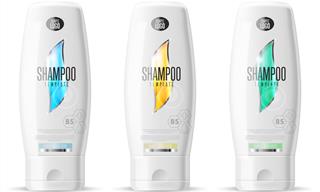
Did You Know Shampoo Has Other Useful Uses Besides Hair?
if you always thought your shampoo was only meant for keeping your hair healthy and beautiful, you are about to discover 10 particularly useful surprises!

Save Money on Pet Care with These Surprisingly Simple Tips
There are some simple ways to save on pet-related expenses without compromising your pet's health. Read on to find out how.
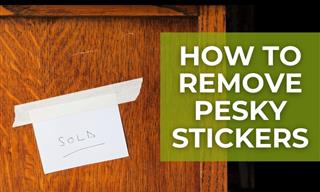
How to Remove Stickers from 5 Different Surfaces
Removing stickers and tape marks from your furniture, electronic supplies, and windows can be really tricky. Here's how to do so quickly and effectively!
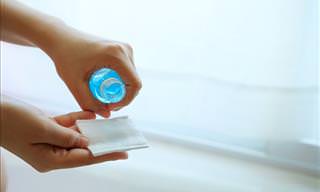
8 Terrific Additional Uses For Rubbing Alcohol!
Unsure about what you're meant to use rubbing alcohol for? Wonder no longer, as we've listed 8 brilliant uses of rubbing alcohol in this article.

Confused About Home Colors? This Post Clarifies Everything
Choosing the correct colors for each room in your home can be a tricky affair, however this guide will clear everything up for you in an instant.

Swap Those Ultra-Pricey Foods With These Substitutes
Get the same taste for less by using these smart alternatives for expensive ingredients.

6 Home Security Mistakes to Stop Making Today
These security mistakes make you home an easy target for intruders. This is how to avoid them.

Things Considerate Shoppers Never Do at the Grocery Store
Here are 15 things considerate shoppers avoid doing at the store.

When on a Flight, Avoid These 8 Things....
To help you stay healthy and comfortable during your next flight, here are some crucial tips to keep in mind.
 19:17
19:17
14 Incredible Egg Tricks For Egg Lovers
14 tricks and tips for cooking eggs!

9 Mistakes We Make When Grilling that May Be Harming Us
We’ve prepared the following guide for you, in which you'll discover the 9 mistakes you should avoid when barbecuing.

The BEST Drinks to Replenish Your Body After A Workout
What you consume to refuel your body after a workout really matters. The good news is, you really don't have to stick to plain water...
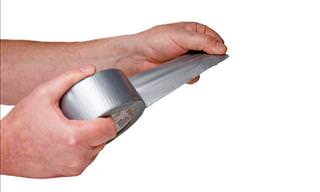 4:40
4:40
This Is What Makes Duct Tape So Strong! Impressive
This is why duct tape is so strong!

10 Natural Ways to Keep Your House a Spider-Free Zone
Having spiders in your home is never pleasant, nor are the chemicals normally used to get rid of them. Here are 10 natural ways of ridding your home of spiders.

If You Value Your Health, Wash These 9 Foods Well
Are you washing these 9 foods correctly? Probably not!

8 Reasons You Shouldn't Worry If You're Going Bald...
Although for many men, going bald is their worst nightmare, it's actually associated with numerous advantages. Here are 8 to lift your spirits.

Lose Weight with These Healthy Food Alternatives
Need to lose some weight? These food alternatives will help you do just that.
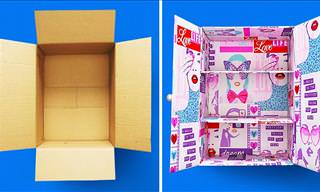 14:38
14:38
29 Things You Can Do With Cardboard Boxes!
This video is about to show you some amazing ideas and crafts you can do with leftover cardboard or cardboard boxes!

A Complete Guide to Pairing Wine with Food
This guide to great wine-food combinations will bring out the best flavors and characteristics of both.
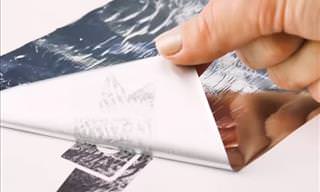 8:55
8:55
21 Awesome Kitchen Hacks That are Really Useful
From using a lighter to open up a stiff jar to learning how to sharpen a knife in no time at all, these life hacks will make your life easier.
 4:59
4:59
Incredible! This Log Cabin Was Built by Just One Man
Watch a timelapse of the construction of a log cabin by just one man, starting from the first tree he felled up until the very last floorboard was laid.
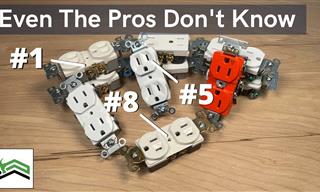 12:30
12:30
10 Things You Didn't Know About Power Outlets
Today we're diving deep into the hidden world of power outlets, uncovering ten incredible facts that will completely change how you see these humble wall fixtures forever.

10 Tips for Seniors to Use Tech Like a Pro
Seniors, enhance your tech skills with these tips.

5 Crucial Things to Consider When Buying Used Furniture
Buying used furniture lets you buy high-quality pieces for less money. In this article, we list 5 useful tips that will help you select quality used furniture.
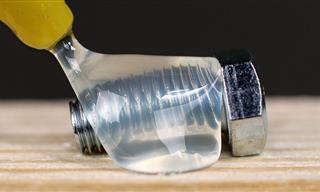 35:19
35:19
Super Tutorial: Top 100 Construction Tips and Hacks
Whether you're a skilled construction worker or just starting out, these practical insights will help you excel using simple tools.

Keep Baldness Away the Natural Way...
How do we stop our hair from falling out and encourage natural growth? I do it by using these tips!
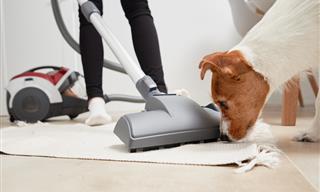
Is Your Dog Afraid of the Vacuum? These Tips Might Help
If the vacuum sends your dog into a tailspin, don’t worry, you are not alone. Follow these steps to reduce your dog's dislike of the vacuum cleaner.

Every Gardener MUST Have These Useful Charts on Hand!
Have a black thumb? These gardening charts will help you turn it green!
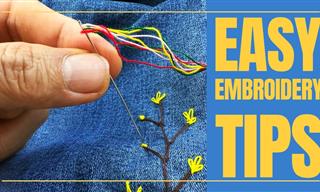 4:34
4:34
7 Super Useful Embroidery Tips and Hacks
Get to know 6 tricks for creating beautiful embroidery designs on clothes—perfect for beginners, but also for those already familiar with the technique.

Read This to Deal With That Terrible Smell In Your Fridge!
If there's a bad odor in your refrigerator, then this guide will show you exactly how to get rid of it quickly and easily.
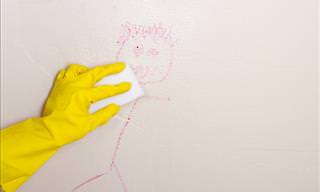
Remove Marks from Your Walls By Following These Tips
Here's how you can clean marks and stains on your walls.

Why Wearing Flip Flops Is a Bad Idea For Your Health
What are the worst and the best types of footwear for summer weather? Here's a complete guide to summer footwear. Enjoy!

Your Body Can Do More Things For You Than You Ever Knew
If you suffer from the odd ache and pain, you'll be glad to know that you can make them go away simply by knowing these 14 fantastic body hacks.

Make Your Toilet Tank Sparkle with This Easy Guide!
Clean a toilet tank like a pro with these steps.

19 Household Items You Need to Change Now
It's high time you change these household items.

8 Signs of Fake Love in a Romantic Relationship
8 signs someone is faking their love in a relationship.

Unsure About Retiring? Here's Why You Should Wait
Are you financially prepared to retire? Look out for these signs.
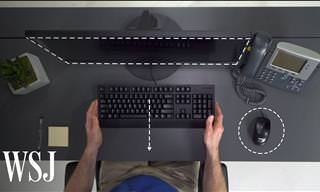 3:23
3:23
Relieve Joint and Back Pain with Desk Ergonomics Tips
Do you know how to set up your desk and how to work at the computer without wreaking havoc on your joints and spine? This video shows

This Post Will Show You Everything About Bananas
You're about to know everything there is to know about the banana because we're presenting you with SO much information here.

Can't Fall Back Asleep? Try These 8 Genius Tricks
Do you wake up in the middle of the night? Thankfully, there are some natural remedies you can try, that will get you back to falling asleep quickly, making any unwelcome moments of wakefulness seem like nothing more than a fleeting dream.

Organizing Tips: 13 of the Best Home Storage Hacks
Find some useful and clever organizing tips and hacks that will come in handy for every home.
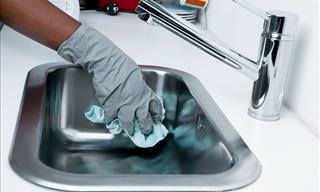
Want to Clean Like a Professional? Here's How...
Have you ever wondered how professional cleaning teams manage to get their work done so quickly and with such spectacular results? Learn their secrets here...
To enable your Ad-Free Subscription, please fill the fields below
Your subscription was successful, now you can enjoy an ad-free experience!! Note: To make sure you get no ads, please make sure to log in to your account. If you are logged in already, then refresh the page. The subscription can be cancelled at any time.


